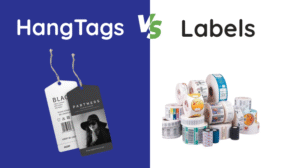Distributingbusiness cardsin stores can significantly boost your company’s visibility and attract new customers. However, you might be uncertain about the legality of this practice.
The rules vary based on store policies and local regulations. Some shops may welcome the opportunity, while others have strict policies against it. Additionally, local laws might impose restrictions on such activities.
In this article, we explore the legal considerations, potential consequences, exceptions, and best practices for leaving business cards in stores to ensure you navigate this promotional strategy effectively and respectfully.
- Leaving business cards in stores is not illegal, but you must respect store policies and local regulations by asking for permission first.
- Ignoring rules can lead to issues like fines, trespassing charges, or damage to your brand’s reputation.
- Best results come from distributing cards professionally, choosing appropriate locations, and exploring alternative marketing tactics such as digital cards, flyers, or events.
Is it illegal to put business cards in stores?
No, it’s not illegal to leave business cards in stores, but it’s essential to ask for permission from the store owner or manager first. Ignoring store policies could lead to legal issues, so always respect the retailers rules and only leave your cards if allowed.
While leaving business cards in shops is generally acceptable, it’s important to recognize that certain establishments, particularly high-end boutiques or exclusive venues, may have stricter policies regarding external promotions.
Therefore, it’s advisable to seek prior consent from the store management to ensure compliance and prevent potential legal issues.
What are the potential penalties for leaving visiting cards in stores?
Distributing your business cards in shops is usually acceptable, but unauthorized methods like leaving them in mailboxescan lead to legal issues. Ignoring merchant policies against card distribution may also result in penalties, as retail owners have the right to protect their space and maintain their desired customer experience.
In extreme cases, repeatedly distributing cards without permission can lead to charges such as trespassing, harassment, or disturbing the peace.
Unauthorized distribution can also confuse customers about business affiliations, potentially leading to accusations of unfair competition and subsequent lawsuits or damages.
Additionally, violating store rules may contravene business laws, resulting in fines or even the suspension or revocation of your business license.
Best practices for leaving business cards in stores
When you leave your business cards in stores, you’re not just showcasing your brand; you’re also making a statement about your professionalism and ethics.
Being mindful of how you distribute your cards can help foster trust with retail owners and bolster your brand’s reputation in the eyes of potential customers. To effectively and responsibly distribute business cards in shops, follow these best practices:
- Understand store policies: Take the time to understand the store’s guidelines on promotional materials. Respect their rules and seek permission when necessary before leaving your visiting cards.
- Choose suitable locations: Identify appropriate areas like bulletin boards or designated community spaces where business card placement is encouraged. Avoid places where your cards might be perceived as litter.
- Control quantity: Strike a balance by leaving enough cards for interested individuals without cluttering the store’s space. You can always replenish your supply as needed.
- Prioritize professionalism: Ensure your business cards are visually appealing and reflect professionalism. A well-designed visiting card leaves a lasting impression and increases your chances of generating sales or inquiries.
Exploring alternative marketing tactics
If you’re seeking innovative ways to market your offerings without relying on business card distribution in shops, consider these alternative strategies:
Digital marketing approaches
- Create a website: Show what you offer on a website. Write stuff on a blog to get people interested and to make sure more people see your site.
- Social media: Use places like Facebook, Instagram, and Twitter to talk about your stuff. Make things people like to read and talk to people who follow you to keep them interested.
- Use digital cards:Makedigital business cardswith QR codes or NFC to share your contact details more easily.

Traditional marketing methods
- Hand out flyers: Design visually captivating flyers and distribute them strategically to your target audience. High-traffic locations such as community centers, libraries, and grocery stores are ideal distribution spots.
- Bulletin board advertising: Utilize bulletin boards in schools, government buildings, and community centers to showcase your promotional materials like flyers and brochures.
- Event participation: Attend industry trade shows, conferences, and community events to showcase your offerings. Alternatively, host your own events to attract potential clients and network with industry peers.
- Promotional materials: Explore the use of postcards, brochures, and discount coupons as promotional tools. Distribute them strategically in waiting rooms, salons, airports, and restaurants to capture attention.
By integrating these alternative marketing tactics into your promotional efforts, you can effectively raise awareness about your products or services without relying solely on business card distribution in stores.
Conclusion
Leaving your business cards or flyers in stores can be okay, but it depends on the store’s rules and local laws. To avoid any problems, follow the store’s guidelines, pick the right places to leave your business cards, and act professionally.
Ensure it’s allowed before leaving your cards, and always include your contact information so interested customers can reach out to you.
Answering your questions
Leaving business cards in stores isn't illegal, but it's a good idea to ask the store owner or manager for permission first.
Yes, as long as it's permitted by local laws and you don't cause any disruption or leave litter behind.
Place your business cards in high-traffic areas where your target audience is likely to see them, like local shops, salons, or community spaces.




